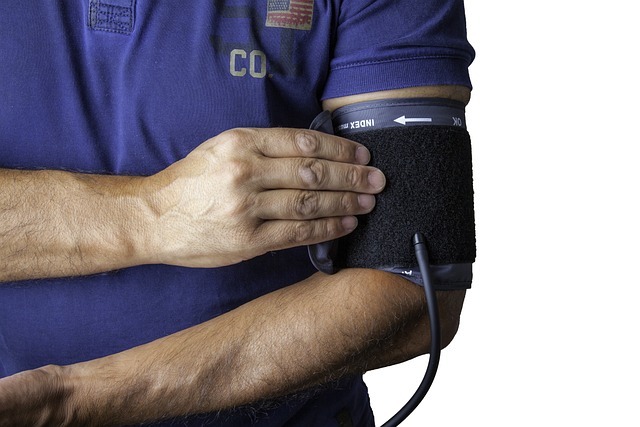When Joint Pain Signals Immune Activity: Diagnostic Steps and Referral Pathways
Joint pain can result from mechanical causes or from immune-driven inflammation. Recognizing when pain reflects autoimmune activity affects how clinicians pursue diagnosis, monitoring, and referrals. This summary outlines clinical red flags, diagnostic tools including imaging and serology, common monitoring strategies, and typical referral pathways to specialist services.

This article is for informational purposes only and should not be considered medical advice. Please consult a qualified healthcare professional for personalized guidance and treatment.
Arthritis or autoimmune signs
Not all joint pain is autoimmune. Arthritis is a broad term describing joint inflammation that may arise from wear-and-tear (osteoarthritis), crystal deposition, infection, or autoimmune causes. Clues that suggest an autoimmune cause include morning stiffness lasting more than 30 minutes, symmetrical joint involvement, multiple joints affected, systemic symptoms such as fatigue or fevers, and a history of other autoimmune conditions or family history. Documenting the pattern, onset, and severity of symptoms helps determine whether serology and specialist referral are warranted.
When to suspect immune-driven inflammation?
Acute monoarticular swelling often points away from systemic autoimmune disease and toward trauma, infection, or crystal arthropathy. In contrast, persistent polyarticular pain, recurrent flares, unexplained weight loss, skin rashes, or ocular symptoms should raise suspicion for autoimmune inflammatory disorders. Comorbidity such as cardiovascular disease or osteoporosis can complicate presentation and influence urgency of referral. Primary care clinicians often use symptom duration, physical exam findings (synovitis, joint deformity, reduced range), and response to initial therapies to decide on ordering targeted tests or referring to a specialist.
Diagnosis: imaging and serology
Diagnosis combines clinical assessment with targeted testing. Basic blood tests include markers of systemic inflammation (ESR, CRP) and specific serology such as rheumatoid factor (RF) and anti-CCP antibodies for rheumatoid arthritis, and ANA for connective tissue diseases. Synovial fluid analysis can identify crystals or infection. Imaging complements lab work: X-rays identify erosions and joint space narrowing; ultrasound detects synovitis and early erosive change and can guide aspiration; MRI is sensitive for early inflammatory changes and soft tissue involvement. No single test confirms every autoimmune arthritis, so results are interpreted in context.
Managing flares and monitoring
Flares are episodic increases in pain and inflammation that need rapid assessment to rule out infection or other triggers. Monitoring strategies include regular clinical reviews, periodic lab work to track inflammation and medication safety, and patient-reported outcome measures to capture functional status. Telemedicine can support monitoring between in-person visits, especially for stable patients or those in remote areas. Adherence to treatment and preventive measures (vaccinations, bone health assessments) are key to reducing flare frequency and long-term complications like osteoporosis.
Treatment considerations: biologics and immunotherapy
Treatment typically follows a stepwise approach: conventional synthetic disease-modifying antirheumatic drugs (csDMARDs), often methotrexate, are first-line for many autoimmune arthritides. If disease remains active, targeted therapies such as biologics or other immunotherapy agents may be considered. These medications can reduce inflammation and prevent joint damage but require baseline screening (infection risk, vaccinations) and regular monitoring for adverse effects. Shared decision-making supports adherence and long-term disease control; clinicians weigh comorbidity, reproductive planning, and infection risk when selecting agents.
Local services and referral pathways
Referral to a specialist is indicated when diagnosis is uncertain, disease is severe, there is rapid progression, or when advanced therapies are being considered. Typical referral pathways begin with a primary care assessment and targeted testing; urgent referrals are made for suspected inflammatory arthritis with significant functional impairment.
| Provider Name | Services Offered | Key Features/Benefits |
|---|---|---|
| Mayo Clinic Rheumatology | Comprehensive diagnosis, imaging, biologic therapy management | Multidisciplinary teams, access to advanced imaging and clinical trials |
| Cleveland Clinic Rheumatology | Outpatient assessment, telemedicine follow-up, osteoporosis care | Regional centers, integrated comorbidity management |
| Johns Hopkins Rheumatology | Autoimmune diagnostics, immunotherapy guidance | Specialty clinics for complex connective tissue diseases |
| NHS Rheumatology services (UK) | Community and hospital-based clinics, shared-care with primary care | Structured referral pathways and standardized treatment protocols |
| Mount Sinai Rheumatology | Clinical management, rehabilitation coordination | Emphasis on care transitions and rehabilitation support |
Conclusion
Timely recognition that joint pain arises from immune activity shapes the diagnostic approach and determines the need for specialist referral. Combining careful clinical assessment with imaging, serology, and synovial analysis helps clarify diagnosis; monitoring and coordinated care—including consideration of biologics, immunotherapy, rehabilitation, and comorbidity management—support better outcomes over time.






